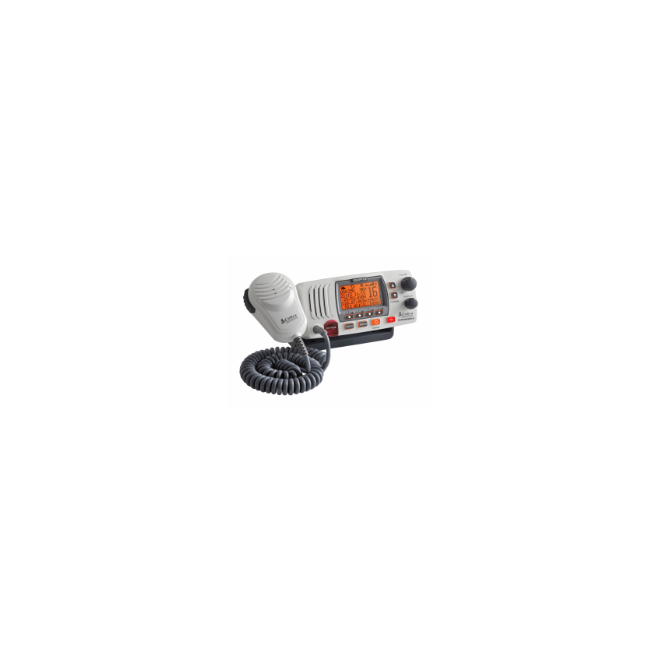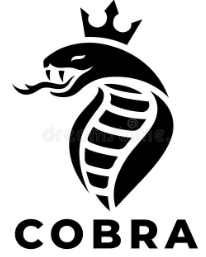Cobra MRF77WGPS Marine Radio User Manual

Customer Assistance
Should you encounter any problems with this product, or not understand its many features, please refer to this owner’s manual. If you require further assistance after reading this manual, Cobra Electronics offers the following customer assistance services:
Transceiver Controls, Indicators, And Connections

Product Features
Built-In GPS Receiver
Shows GPS coordinates on screen and automatically sends GPS location with DSC calls.
Rewind-Say-Again®
Replay missed VHF calls. Automatically records the last 20 seconds of incoming radio transmissions. Great when in noisy conditions.
Dual Power
Selectable to one (1) or 25 watts output power for near or distant calling. USA/International/Canada Channels Allow operation on any of the three (3) different channel maps established for these areas.
Instant Channel 16/9
Instant access to the priority Channel 16 and calling Channel 9. Digital Selective Calling (DSC Class-D) Allows the ability to maintain a listening watch on VHF Channel 16 while simultaneously monitoring Channel 70 for DSC calls. Allows sending a distress message at the touch of a button as well as specific station-to-station calls. Radio utilizes two (2) built-in encoders (receivers).
Safety Training Information
This Cobra Marine radio is designed for and classified as “Occupational Use Only.” It must only be used in the course of employment by individuals aware of both the hazards and the ways to minimize those hazards. This radio is NOT intended for use in an uncontrolled environment by the “General Population.”
- FCC OET Bulletin 65 Edition 97-01 Supplement C, Evaluating Compliance with FCC Guidelines for Human Exposure to Radio Frequency Electromagnetic Fields. n American National Standards Institute (C95.1-1992), IEEE Standard for Safety Levels with Respect to Human Exposure to Radio Frequency Electromagnetic Fields, 3 kHz to 300 GHz.
- American National Standards Institute (C95.3-1992), IEEE Recommended Practice for the Measurement of Potentially Hazardous Electromagnetic Fields
- RF and Microwave.
- Cobra Electronics Corporation™ recommendations for radio frequency exposure are based upon the federal regulatory requirements in the U.S.A. Your country may have different requirements. Ask your dealer or another knowledgeable person. Compliance with recommendations for Radio Frequency Exposure is the responsibility of both the antenna installer and the radio operator.
WARNINGS
Your radio generates electromagnetic RF (radio frequency) energy when it is transmitted. To ensure that you and those around you are not exposed to excessive amounts of that energy, DO NOT touch the antenna when transmitting. KEEP the radio at least two (2) inches (5 cm) away from yourself and others when transmitting. DO NOT operate the radio without a proper antenna or equivalent dummy load attached. Doing so may expose you to excessive RF energy and will damage the radio. DO NOT transmit more than 50% of the time the radio is in use — 50% duty cycle. The radio is transmits when the Talk button is pressed and the transmitted information shows on the LCD screen.
Recommendations For Marine Communication
The frequencies your radio uses are set aside to enhance safety afloat and for vessel navigation and operational messages over a range suitable for nearshore voyages. If the 25-watt maximum output of your radio isn’t sufficient for the distances you travel from the coast, consider installing more powerful radio equipment such as an HF single-sideband or satellite radio for your vessel. The U.S. Coast Guard does not endorse cellular telephones as substitutes for marine radios. They generally cannot communicate with rescue vessels and, if you make a distress call on a cellular telephone, only the party you call will be able to hear you.
Additionally, cellular telephones may have limited coverage over water and can be hard to locate. If you don’t know where you are, the Coast Guard will have difficulty finding you if you’re using a cellular telephone. However, cellular telephones can have a place on board where cellular coverage is available — to allow social conversations and keep the marine frequencies uncluttered and available for their intended uses.
FCC LICENSING INFORMATION
Cobra Marine VHF radios comply with the FCC (Federal Communication Commission) requirements that regulate the Maritime Radio Service. This Cobra Marine radio incorporates a VHF FM transceiver designed for use in the frequency range of 156.025 to 163.275 MHz. It requires 13.8 volts DC and has a switchable RF output power of one (1) or 25 watts. The transceiver is capable of Class-D (Digital Selective Calling) operation in accordance with CFR Part 47, Section 80,225.
The radio operates on all currently allocated marine channels and is switchable for use according to U.S.A., International, or Canadian regulations. It features instant access to emergency Channel 16 and calling Channel 9 as well as NOAA (National Oceanic and Atmospheric Administration) All Hazards Radio with Alert that can be accessed by pressing one (1) key.
Station License An FCC ship station license is no longer required for any vessel traveling in the U.S.A. waters that uses a VHF marine radio, RADAR, or EPIRB (Emergency Position Indicating Radio Beacon), and which is not required to carry radio equipment. However, any vessel required to carry a marine radio on an international voyage, carrying an HF single sideband radiotelephone, or carrying a marine satellite terminal must obtain a station license. FCC license forms and applications for ship and land stations can be downloaded through the Internet at www.fcc.gov/forms. Forms can also be obtained by calling the FCC at 888- 225-5322.
Digital Selective Calling (DSC)
Digital selective calling is a semi-automated system for establishing a radio call. It has been designed by the International Maritime Organization (IMO) as an international standard for VHF, MF, and HF calls and is part of the Global Maritime Distress and Safety System (GMDSS). DSC will eventually replace aural (listening) watches on distress frequencies and will be used to announce routine and urgent maritime safety information broadcasts.
Until DSC is fully implemented, it is still necessary to maintain a listening watch on Channel 16. The DSC system allows mariners to instantly send a distress call with GPS position coordinates (requires a GPS receiver to be connected to the radio) to the Coast Guard and other vessels within range of the transmission. DSC also allows mariners to initiate and receive distress, urgent, safety, routine, position request, position send, and group calls between vessels equipped with DSC-capable radios.





